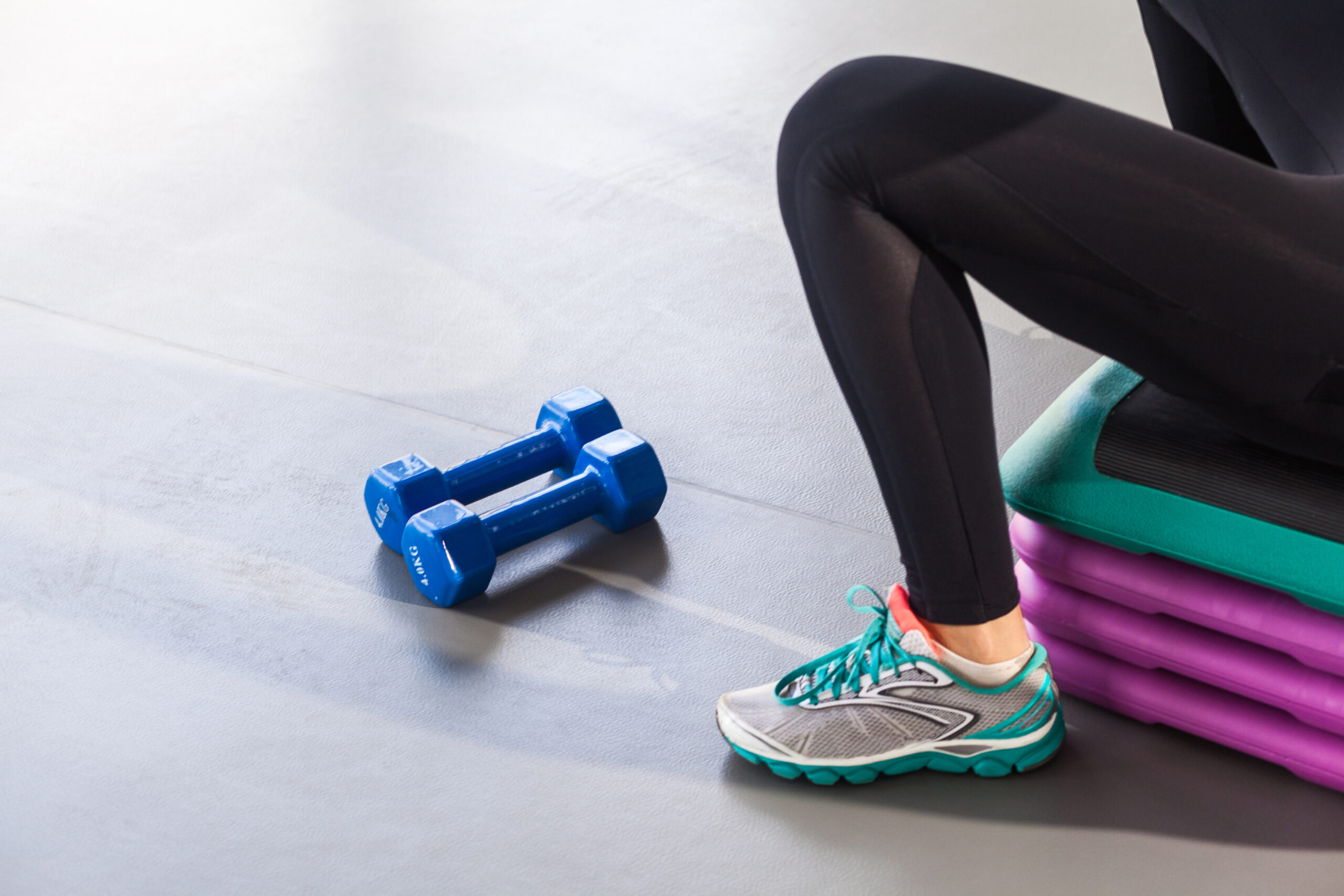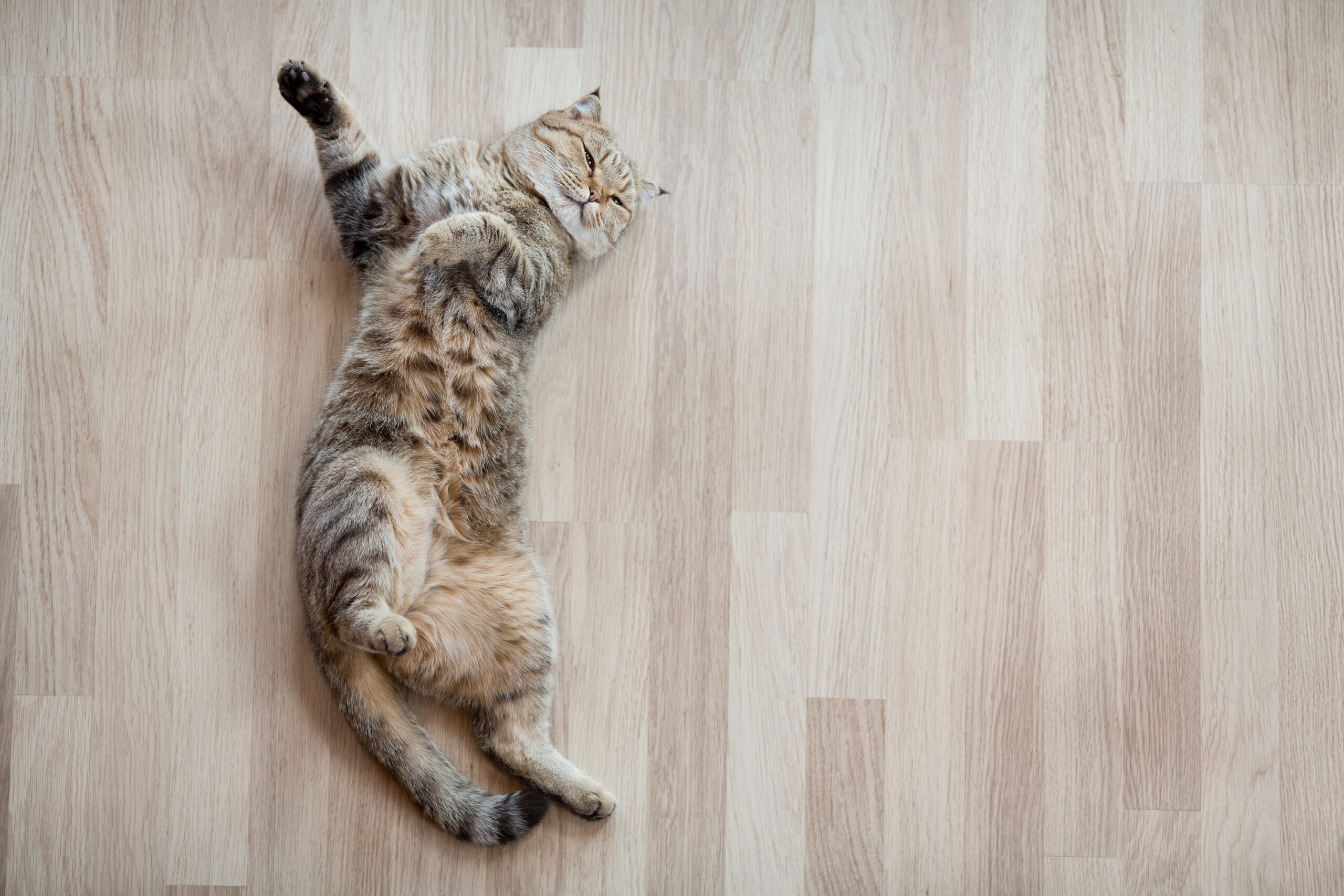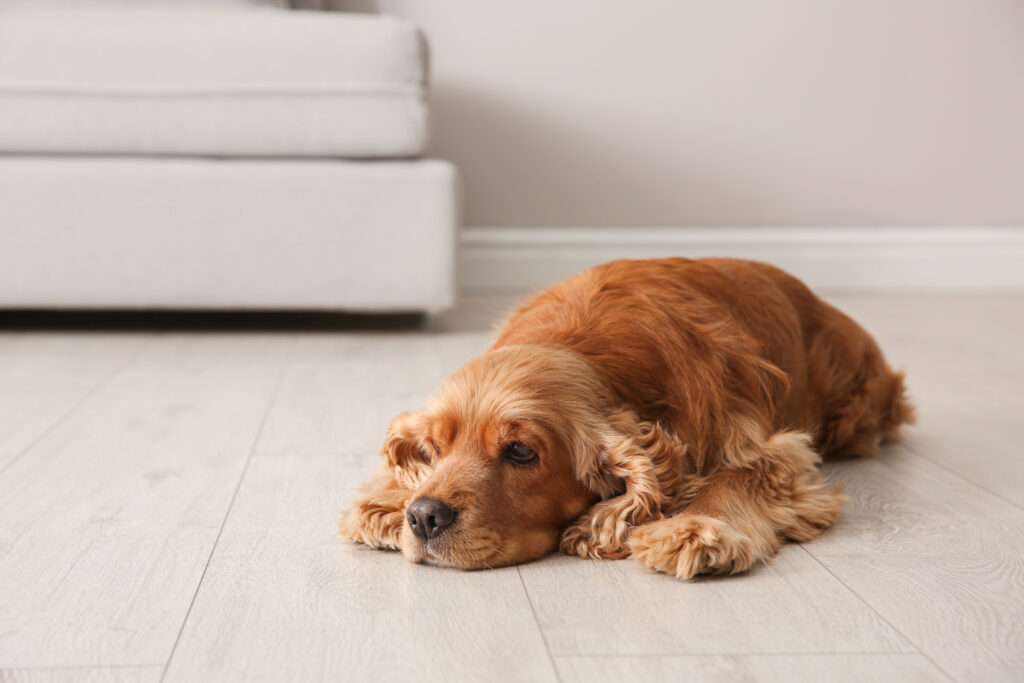
Your pets are family members, so it’s frustrating when they destroy your floors. Let’s look at the different flooring options for your home and pets!

Today’s vinyl flooring has an appearance and feel that makes it very similar to hardwood. Vinyl flooring is available in a range of styles and finishes. LVT, or luxury vinyl tile, can be installed in the same way as wood. The top layer is water resistant and wears out like ceramic. Wood Plastic Composite (WPC) – rigid core is made of wood and plastic composite. It often has Stone Plastic Composite (SPC) underlay padding – a rigid core made of stone and plastic, with underlay padding attached.
WPC and SPC vinyl flooring are the most popular for pet owners because they are waterproof and do not need to be glued directly to the subfloor. Accidents of your pet will not ruin your floor.
The tile, a classic and elegant option for kitchens around the world, is made from durable materials so that it can also be used in bathrooms. Ceramic and porcelain tiles are popular and durable options for pets, as they are more stain or scratch resistant than natural stones. The tile is difficult to damage or stain once it has been properly installed, but as a pet owner, you can consider additional waterproofing for your grout.
Although laminate is not as robust or durable as wood, it is often much cheaper. The laminate flooring mimics the appearance of real hardwood but is made from different materials. This flooring is moisture resistant, especially if it is cleaned immediately after an accident. However, if the board remains saturated with water for too long, it can swell and deform when it dries.
Hardwood floors are generally installed and finished on site. Wood essence affects the grain/pattern, but you can apply a urethane finish to create an attractive surface that will protect it from your dog’s claws. Water-based polyurethane can be used instead of oil-based products. Water will deform the floor, but it is resistant to moisture, spills and accidents. Hardwood floors can be refurbished several times and last a long time. Wood floors are durable and aesthetic, but they can be expensive: expect to pay more!

Engineered wood floors give you the best of the laminate and hardwood world: they include a thin layer of wood, as well as “wear layers” on a layered core made from real or synthetic wood. The variety of finishes, colors, and patterns available for engineered wood floors makes it a good choice for homeowners who want their flooring to stand out. Engineered floors are designed to be durable and easy to clean, but water damage can deform the wood or stick the particles together.

Many carpets are made specifically for animals from, but moisture and stains can still penetrate through it, and into the subfloor. Cleaning pet stains from the carpet is not pleasant, but with a moisture-resistant backing, your carpets will be more durable and comfortable. If you choose a woven rug, look for one that is made of berber or other type of continuous weave fabric so that it is not destroyed by your animals. Carpet is a traditional floor option that provides warmth, but because pet hair can cling to its fibers and be difficult to remove, it will probably need to be replaced every 10 years or so.
Concrete, once reserved for industrial and commercial spaces, is gaining popularity among homeowners. Colored concrete stain can be used to add a touch of color and brightness to neutral-looking floors. Although it is quite standard for basements or apartments on the first floor, high-rise apartments can also enjoy this look. Acid etching and grinding may be required to prepare concrete for dyeing. And a water-resistant coating should be applied, as on wooden floors, to prevent moisture absorption. Concrete is probably the least comfortable option, but when installed properly, it can be beautiful and durable.